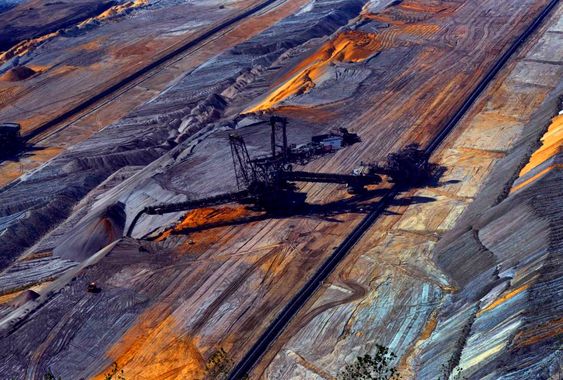
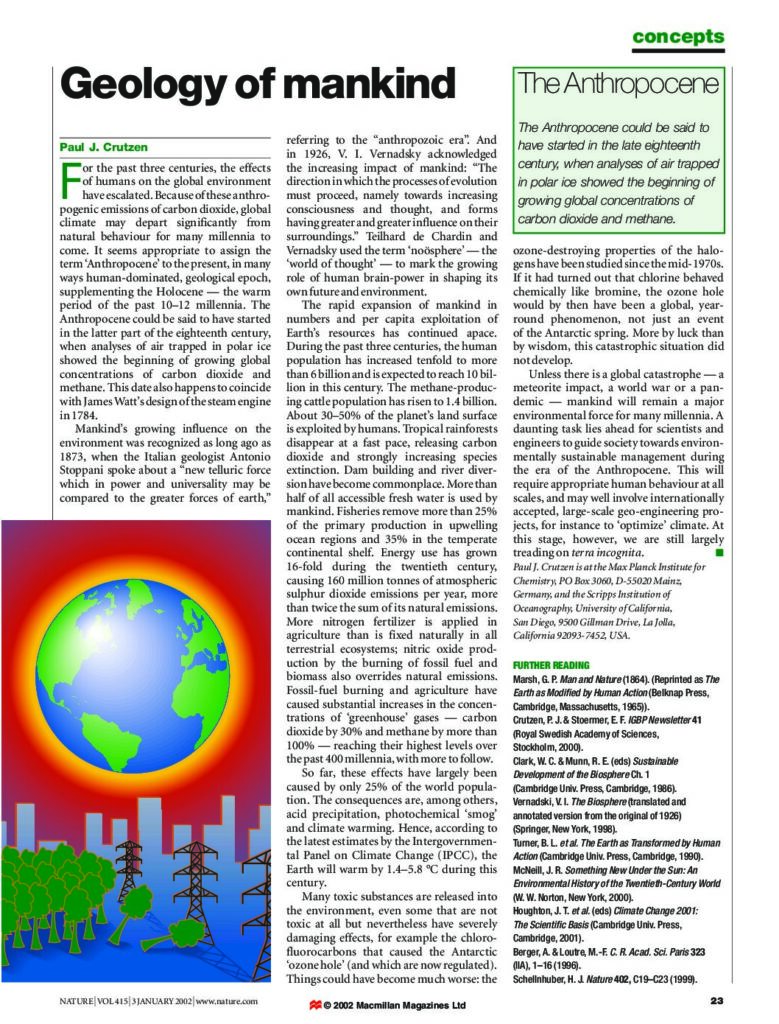
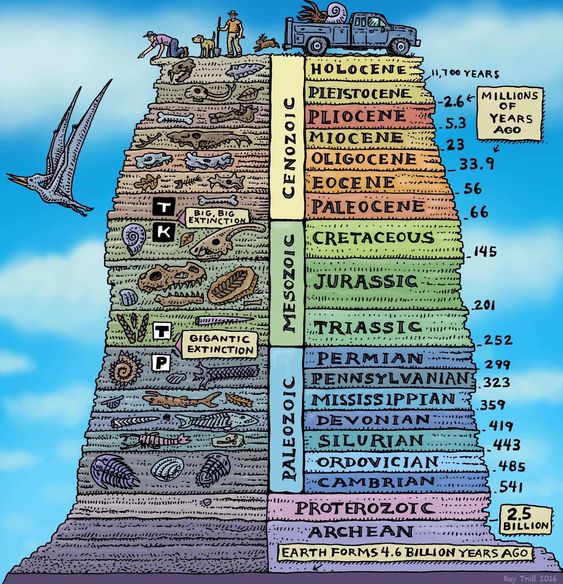
The Holocene has been a good time for human civilization to emerge and thrive. The seasons have been pretty regular, moving between relatively mild boundaries of hot-ish and cold-ish. That transition was the key change and allowed humans to get stable and productive agriculture started.
But, thanks to civilization, the Holocene is now at an end. That’s where the story gets really interesting and where the Anthropocene makes its entrance.
Scientists now recognize that our impact on Earth has become so significant we’ve pushed it out of the Holocene into the Anthropocene, an entirely new geological epoch dominated by our own activity (see Andy Revkin’s reporting on the subject). And it’s not just about climate change. Human beings have now “colonized” more than 50 percent of the planet’s surface. And we drive flows of key planetary substances, like potassium, far above the “natural” levels.
NPR Opinion Climate Change And The Astrobiology Of The Anthropocene by Adam Frank
Alejandro Cearreta, Universidad del País Vasco / Euskal Herriko Unibertsitatea
Are we really living in the Anthropocene, the geological time marked by the global impact of human activity? And if so, when did it begin?
These are questions that the Anthropocene Working Group – established in 2009 by the International Commission on Stratigraphy to propose a definition of the concept and to estimate its potential as a unit of geologic time – is hoping to answer.
The group announced on July 11, 2023, that Lake Crawford in Ontario, Canada, had been chosen as the site with the sedimentary record that would be used to define the beginning of the Anthropocene.
What makes this site so special that it holds the dividing line between different geological epochs?
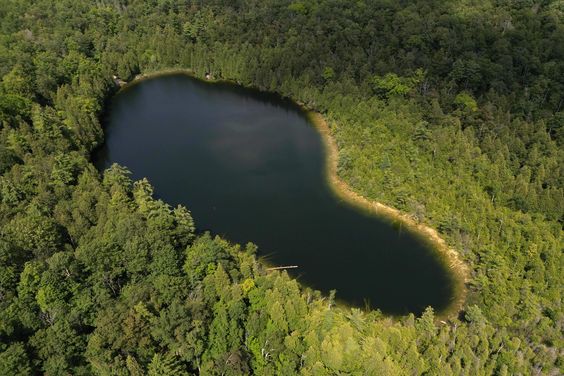
The Footprint of the Great Acceleration
Since its formation, the Anthropocene Working Group has evaluated various types of physical, chemical, and biological evidence preserved in sediments and rocks, and it has published numerous scientific papers that have explored their nature and relevance.
These studies have concluded that the Anthropocene is significant on a geologic scale because of the rapidity and magnitude of recent human impacts on processes operating on the Earth’s surface. Many of these impacts have generated irreversible changes that exceed the small range of natural variability of the Holocene, which began 11,700 years ago.
In the geologic strata, the Anthropocene Working Group has identified a significant set of indicators that coincide with the so-called “Great Acceleration” of the mid-20th century, driven by an unprecedented increase in human population, energy consumption, industrialization, and globalization following the end of World War II. These include the following:
- Radioisotopes from thermonuclear weapons testing in the atmosphere (such as plutonium).
- Carbonaceous particles originating from the burning of fossil fuels at high temperatures.
- Microplastics.
- Changes in biodiversity including extinction, the movement of species out of their natural range, and the great expansion of domesticated organisms.
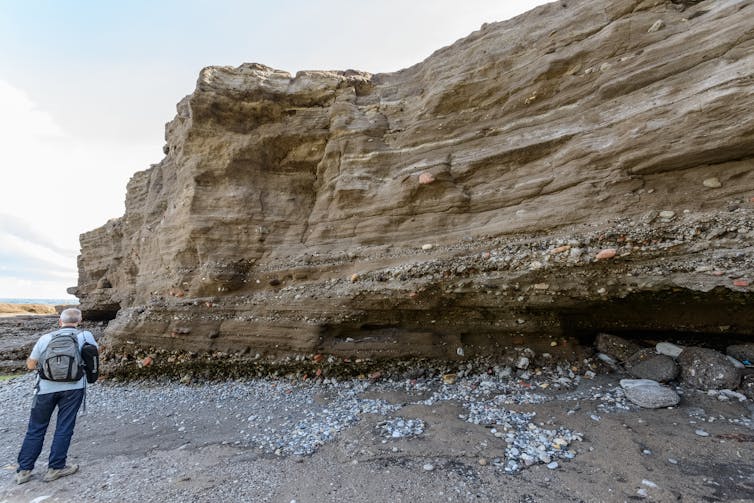
Finding the ‘golden spike’
Over the years, the Anthropocene Working Group has mostly agreed that the Anthropocene is geologically real and should be formalized as an independent unit within the international scale of geologic time.
Its onset would be in the mid-20th century, in the 1950s, according to the global signals recorded in sediments since then.
The Anthropocene Working Group established that it is necessary to determine its place of reference by means of a material and temporal boundary called a Global Boundary Stratotype Section and Point, or GSSP – colloquially, a “golden spike.” This is the most widely accepted method for formalizing geologic units over the past 540 million years.
Selection criteria
Since 2019, a collaborative project between the Anthropocene Working Group and numerous research laboratories has been underway as part of an international initiative called Anthropocene Curriculum, promoted by the Haus der Kulturen der Welt and the Max Planck Institute for the History of Science, both in Germany.
Twelve detailed proposals were initially submitted for different geological sections that could host this GSSP, located on five continents and situated in eight different geological environments. All of them were published in 2023 in the scientific journal Anthropocene Review. These papers were the main source of information for the voting members of the Anthropocene Working Group during the selection process.
The Anthropocene Working Group finally reviewed nine reference sections in detail. Suitable candidates were those containing thin layers of sediment that could be analyzed from year to year and whose age could also be corroborated by the presence of radioactive elements to ensure a complete sedimentary record.
The stratigraphic procedures established to decide on a GSSP are already standardized in geology and are common for the definition of any geological time. Thus, a “golden spike” requires the local presence of a physical marker that can be seen with the naked eye and at least one indicator signal, such as a geochemical change, that is found in sediments and rocks of the same age and across the globe.
Most of the proposals identified plutonium as the primary indicator and proposed the onset of the Anthropocene from an increase in the signal of this radioactive element.
And the winner is …
Initial discussion on the strengths and weaknesses of each location began in October 2022, and the list was narrowed to three.
According to the results, the most relevant geological sections were in Beppu Bay, Japan; Sihailongwan Lake, China; and Crawford Lake. After a detailed analysis of the nature of their plutonium signal and a new vote, the Chinese and Canadian lake sites were finalists.
In the end, Crawford Lake received 61% of the votes and was chosen as the site of the GSSP for the Anthropocene epoch.
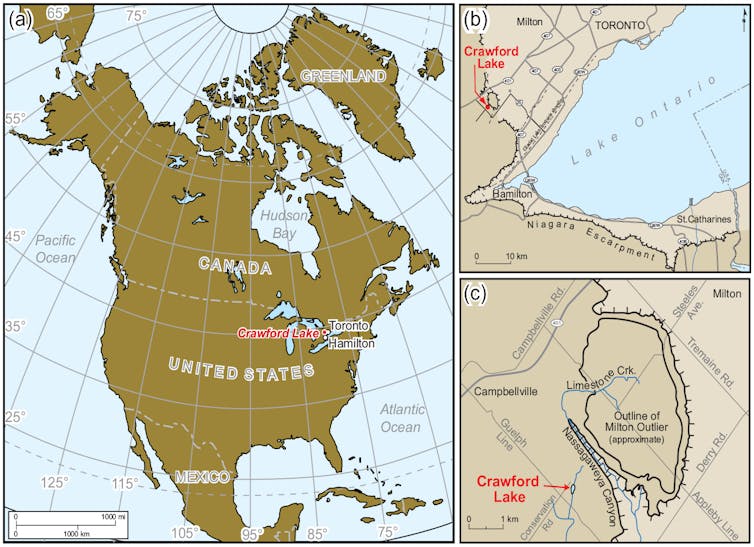
The sediment layers in the lake bed, west of Toronto, were originally investigated to demonstrate the region’s sporadic occupation by Native American peoples and subsequent colonization by Europeans. The new geological study has increased the number of indicators preserved in its various annual layers, which are formed by an alternation of pale calcite deposited in summer, and dark organic laminae, accumulated in winter.
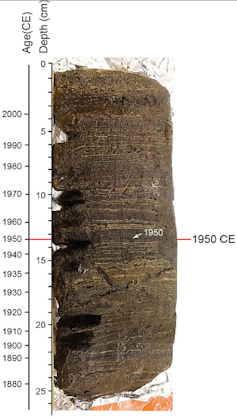
The layer proposed as a visual marker for the GSSP is 6.1 inches (15.6 centimeters) deep at the base of a calcite sheet deposited in the summer of 1950. It was selected because of the rapid increase in plutonium thereafter. This signal also coincides with an increase in carbonaceous particles and a major ecosystem change identified by a decline in elm pollen and a replacement in diatom species, a type of algae.
Farewell to the Holocene
It is important not to confuse the start of human activity and the Anthropocene. The Anthropocene does not include the initial impact of humans, which was regional and grew over time, but it is defined as a consequence of the planetary response to the enormous impact of the Great Acceleration.
The Anthropocene is part of geologic time. Formalizing it precisely will help determine its meaning and use in all sciences and other academic disciplines. The end of a relatively stable epoch in Earth’s history, the Holocene, will thus be recognized.![]()
Alejandro Cearreta, Catedrático de Paleontología, Universidad del País Vasco / Euskal Herriko Unibertsitatea
This article is republished from The Conversation under a Creative Commons license. Read the original article.




Comments are closed.